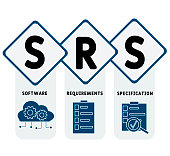Optimized User Experience

본문
What is Long-Term Dependability Testing?
Long-term reliability testing involve assessing the ability of a system or application to maintain its performance and functionality over an extended period. In the context of server-side rendering, it entails evaluating the system's capacity to handle various scenarios, such as changes in traffic patterns, updates, or refactorings, while ensuring that the application remains reliable, efficient, and safe.
Challenges in Long-term Reliability Testing
Modern web applications present unique challenges when it comes to long-term stability testing. Some of the key issues include:
- Complexity of interactions: server-side rendering involve complex interactions between the client-side, server-side, and database components, making it challenging to identify potential issues.
- Varying application demands: server-side rendering must handle dynamic workloads, such as changes in traffic patterns or updates to the application code, which can impact performance and stability.
- Complex deployment workflows: fast rendering solutions often involve automated testing pipelines, which can introduce new issues or exacerbate existing ones.
- Security: fast rendering solutions must ensure the security of sensitive data, authentication and authorization, and prevent various types of attacks, such as SQL injection or cross-site scripting (XSS).
In spite of the complexities, long-term reliability testing offers numerous benefits for fast rendering solutions, including:
- Faster application responsiveness: Thorough testing helps identify and address performance bottlenecks, ensuring that the application remains fast and responsive.
- Cybersecurity confidence: By simulating various attack scenarios, testing helps identify vulnerabilities and prevents potential security breaches.
- Improved application availability: Testing helps identify and fix issues before they become critical, reducing downtime and ensuring that the application remains available.
- Improved developer trust: Long-term reliability testing provides developers and organizations with confidence in the ability of their server-side rendering to support evolving business requirements.
To ensure the long-term reliability of your server-side rendering system, incorporate the following best practices into your testing strategy:
- Real-time testing: Implement a real-time testing that provides instant feedback on the application's performance, security, and functionality.
- Simulated testing: Leverage scripted testing tools and scripts to simulate various scenarios and inject realistic data for accurate testing.
- Real-user monitoring: Use real-user monitoring tools to simulate user interactions and capture realistic traffic patterns.
- Load testing: Conduct stress testing to simulate high-traffic scenarios and evaluate the application's ability to handle heavy loads.
- Integration testing: Perform integration testing to evaluate the interactions between the client-side, server-side, and database components.
- Code analysis: Regularly review the application code to identify potential issues and address them proactively.
- Continuous integration and delivery: Adopt DevOps practices to ensure that the development and testing processes are integrated and automated.
Long-Term Dependability testing is a critical aspect of ensuring the security of your fast rendering solutions. By incorporating robust testing strategies into your development workflow, you can improve the overall reliability of your application and ensure that it remains available and responsive to users over time. By following the best practices outlined in this article, you can build confidence in your modern web applications and deliver high-quality web applications that meet the evolving needs of your users.


댓글목록0
댓글 포인트 안내